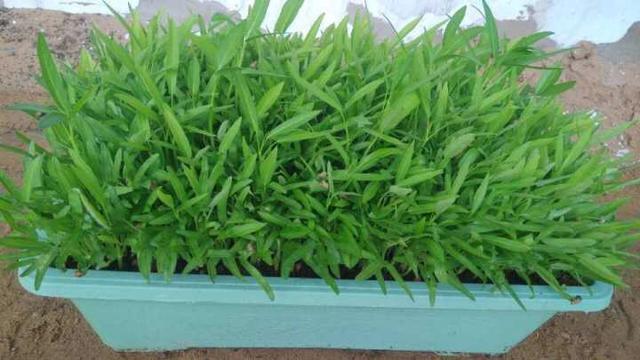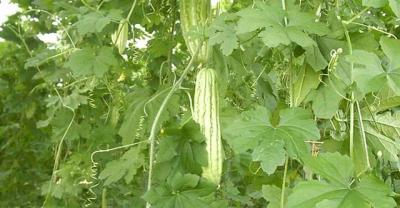Technical requirements for standardized cultivation of Sophora tonkinensis
Technical requirements for standardized planting of soya bean root
Environmental conditions of producing area
1 basic requirements' No.1 Factory
Shall comply with the GB/T 18407.1 regulations. .
2 growth environment
The annual average temperature is 19 ℃ ~ 21 ℃, and the most suitable growth temperature is 25 ℃ ~ 30 ℃.
2.2 humidity the annual average air relative humidity should be above 75%.
2.3 the shade degree of light is 50%-60% in seedling stage, and 20%-30% one year after planting.
3. Garden site selection
Select the sandy limestone loam with deep soil layer, loose texture and good drainage.
4 cultivation techniques
4.1 Propagation is divided into seed propagation and cutting propagation.
4.1.1 seed propagation
4.1.1.1 harvesting and preservation from October to November every year, when the pod changes from green to yellow, the pod is picked back in time, the m seeds are removed to dry, and placed in the room.
Store in a ventilated and dry place.
4.1.1.2 the sowing time of ① sowing seedlings is after seed collection and drying in autumn, and the spring sowing time is from the end of February to the middle of March. The seeds of ② sowing method were sown on the border surface according to the row spacing of 40cm × 40cm, opening holes in the shape of grade into two rows, and covered with soil for 3 cm. The seeds of ③ seedling transplanting were sown in 5cm-10 cm strips according to the row spacing on the whole river sand seedling bed, and were transplanted when the seedling height was above 10cm.
4.1.2 Cuttage propagation
4.1.2.1 the cuttings selected the plants with strong growth and free from diseases and insect pests, cut the annual branches with a diameter of 0.5 ~ 1.0 cm, and cut the short branches with 2 ~ 3 nodes of the growing 25cm in the middle and lower segments.
4.1.2.2 the cuttings were soaked in indolebutyric acid (IBA) 150 mg/L solution for 5 h, then cuttings were removed.
The cutting time of ② is in March in spring and from mid-month to November in lO in autumn. When cutting ③ cuttings, a small shovel was used to cut a trench with a depth of 15 cm in the cutter, and the cuttings were placed obliquely into the ditch according to the row spacing of 5cm × 15 cm. The depth of sand was 2 × 3, and the cuttings were 45 with sand cover. , pour water thoroughly.
4.1.3 Seedling management
4.1.3.1 drainage and irrigation are often watered to keep the seedbed moist and pay attention to drainage in the rainy season to prevent stagnant water.
4.1.3.2 weeding and fertilization at seedling stage, weeding was done for 3 times and fertilized for 2 times, mainly applying nitrogen fertilizer thinly. 1 000kg of rotten farm water and fertilizer or urea 10kg was applied with water every 667m2.
4.2 planting
4.2.1 Deep ploughing and sun exposure one month before planting. Before planting, plow and rake the soil into small pieces, with a width of 70 cm and a height of 15 cm. Dig holes according to row spacing 40cm and plant spacing 40cm. The length, depth and width of the holes are 20cm × 15cm × 15cm. 2 oysters / 3 oysters of manure, compost and plant ash mixed fertilizer are applied to each hole, and then the soil can be planted. The health index of farm manure should be carried out in accordance with Appendix C of NY/T5002.
4.2.2 methods one seedling was planted in each hole. When releasing seedlings, let the roots stretch naturally, it is appropriate to cover the soil over the rhizome, slightly compact the soil, and pour enough water to fix the roots.
4.2.3 Field management
4.2.3.1 Intermediate ploughing and weeding once a year from March to April, July to August and November respectively. In the seedling stage, it is appropriate to cover the border with straw or fern.
4.2.3.2 keep the soil moist during the growth and development period of irrigation and drainage. Water should be irrigated in time in case of drought; drainage should be done well after rain.
4.2.3.3 fertilization and weeding were carried out together with ploughing and weeding, and compound fertilizer was applied twice a year after ploughing and weeding in March to April and November. The average weight per plant was 10g during the seedling growing period and 20g per plant after the second year, which was spread evenly on the ground next to the plant, and the soil was cultivated after application.
4.3 Disease and pest control
4.3.1 the control principle is in accordance with the plant protection policy of "prevention first, comprehensive control" and the harmless control principle of "agricultural control, physical control and biological control, supplemented by chemical control". The use of pesticides for prevention and control shall be carried out in strict accordance with the relevant provisions of GB4285.
4.3.2 Prevention and control methods
4.3.2.1 Agricultural control strengthen field management, increase the application of phosphorus and potassium fertilizer, maintain proper shade and humidity, and prevent water accumulation on the ground.
4.3.2.2 the pathogen of ① root rot was mainly invaded by the root, resulting in root rot and wilting of the aboveground part. The disease occurs throughout the year, with summer and autumn as the serious occurrence period. At the initial stage of the disease, the root was irrigated with chlorothalonil or methyl topiramate 500 times 800 times with water for 2 consecutive times for 3 times. The pathogen of ② white silk disease mainly harms the base and root of the stem, which makes the injured part split vertically and turn brown, and rot in the later stage. The disease mainly occurs in the season of high temperature and humidity. At the initial stage of the disease, the root was irrigated or sprayed with carbendazim or carbendazim mixed with water for 500 times or 800 times for 3 consecutive times. The larvae of ③ stem borer drill into the stems and branches, resulting in a complete hollow inside, and finally all the aboveground parts withered. A long white strip of discharge will be found on the ground of the injured plant. During the control, the egg stage and juvenile stage of the insect should be grasped, that is, from April to June, and the insect should be sprayed 800 times with Lesbon or methamidophos ethyl ester with water or injected through the mouth of the worm. ④ pod borer larvae feed on beans in the pods in case of drought, so that the pods wilt and dry, and there are no seeds to harvest. Therefore, pay attention to the observation during the blooming period of the pregnant buds of soya bean root, once it is found, spray trichlorfon or phoxim with water 800-1200 times. The harmful mite of ⑤ red spider can occur all the year round, which is mainly caused by piercing and sucking on the back of the leaves, which causes irregular chlorosis and turns into small white spots on the front of the leaves, which seriously affects the photosynthesis. The initial stage of the disease was sprayed with dimethoate or imidacloprid L200-l500 times. ⑥ scale insect can occur all the year round, and it is harmful to the young part of the root plant of soya bean, which makes the tender leaves curl and deform. Dichlorvos or imidacloprid can be sprayed l200~l500 times with water.
Modern research series: 30 kinds of Lingnan traditional Chinese medicine standardized cultivation (breeding) technology (set upper middle and lower volume) ¥134.5 JD.com purchase / /
5 harvesting and primary processing
5.1 harvesting.
5.1.1 harvesting time after planting for 3-4 years.
5.1.2 harvesting methods are generally harvested in the same year. Dig out the root in autumn, remove the aboveground part with branch shears, and retain the root and rhizome.
5.2 initial processing
Wash and dry or dry.
6 Storage
Store in a dry, cool and ventilated place.
- Prev

It turns out that asparagus can be grown like this!
Water spinach, formerly known as Ipomoea aquatica, also known as rattan vegetable, Chinese cabbage, macaroni, arenaria, urn vegetable, empty cauliflower, bamboo leaf vegetable, festival vegetable. A white trumpet-shaped flower.
- Next

Key points of planting techniques of potted vegetables
With the development of science and technology, the development of agriculture has followed closely, and various forms of development models have emerged. in the past decade, the new type of tourism is even more rapid.
Related
- Fuxing push coffee new agricultural production and marketing class: lack of small-scale processing plants
- Jujube rice field leisure farm deep ploughing Yilan for five years to create a space for organic food and play
- Nongyu Farm-A trial of organic papaya for brave women with advanced technology
- Four points for attention in the prevention and control of diseases and insect pests of edible fungi
- How to add nutrient solution to Edible Fungi
- Is there any good way to control edible fungus mites?
- Open Inoculation Technology of Edible Fungi
- Is there any clever way to use fertilizer for edible fungus in winter?
- What agents are used to kill the pathogens of edible fungi in the mushroom shed?
- Rapid drying of Edible Fungi

